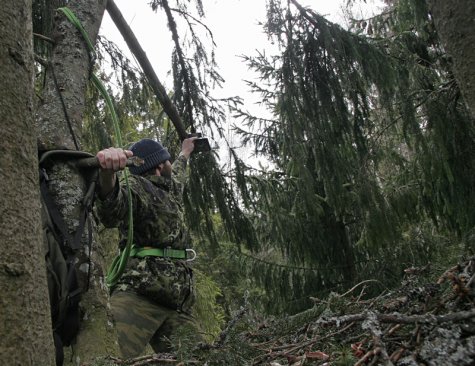Lesser spotted eagle camera
The plan signed by the Ministry of the Environment makes it possible to secure – on the basis of the most recent knowledge – the wellbeing of the lesser spotted eagle and to make the species better known. In the Estonian Nature Conservaton Law, the lesser spotted eagle (Aquila pomarina) is in the most strictly guarded first protection category, in which all individuals and their breeding territories are protected by government regulations.
The lesser spotted eagle population in Estonia is in a comparatively good state at the moment; on the Estonian mainland there are about 500-600 nesting pairs. Most often the lesser spotted eagle can be seen in southern and eastern Estonia, since Estonia is at the north-western limit of the range of this species. On the islands no nests have been confirmed. The range of the lesser spotted eagle isn’t large, it breeds only in central and eastern Europe and winters in southern Africa.
„Even if there are no immediate threats to the lesser spotted eagle in Estonia, the western limit of its range has moved eastwards during the last decades – the Germans can’t for instance be certain that in twenty years or so this species will still breed there”, eagle expert Urmas Sellis, one of the authors of the protection project, said.
In the action plan for the lesser spotted eagle the aims of the protection measures and the activities needed to achieve them are established for the period 2009-2013. The aim of the protection measures is to secure the conservation of the species in Estonia at least at the number of individuals as at present. The programme also focuses on clarifying the habitats of lesser spotted eagles, scientific studies, information and surveillance.
Of our eagles the lesser spotted eagle is the one most accommodated to humans. It is adapted to living in a mosaic agricultural landscape where it can nest in older forest stands between fields and hayfields. The land use regime on the territory of a breeding lesser spotted eagle pair’s territory may be quite variable, but it is important that the whole territory (in a radius of about 2 km from the nest) is not used for monoculture.
The action programme in detail can be read here. (in Estonian)









